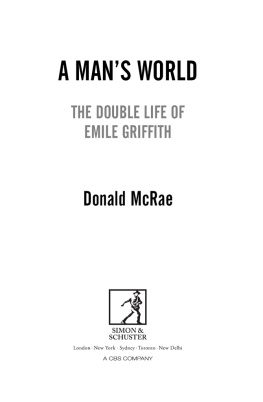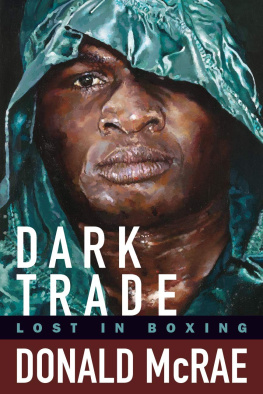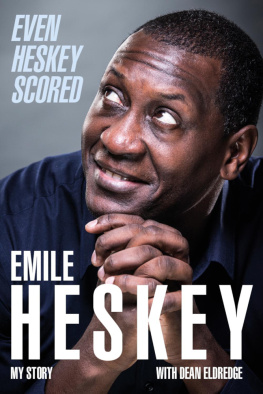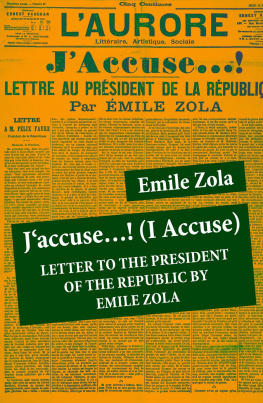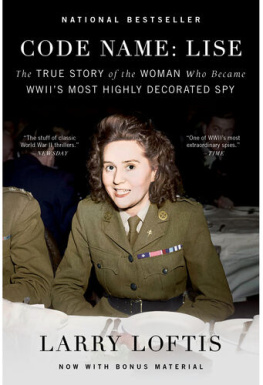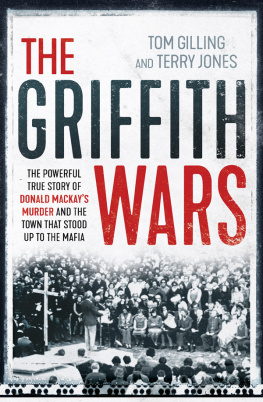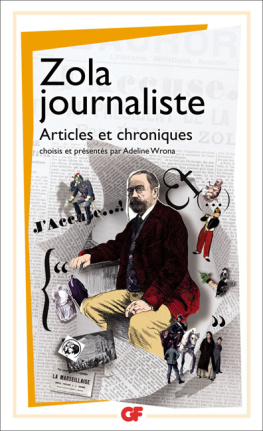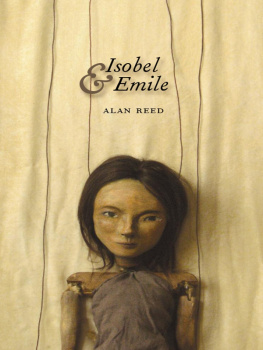A MANS WORLD
Also by Donald McRae from Simon & Schuster:
Dark Trade: Lost in Boxing
Winter Colours: The Changing Seasons of Rugby
In Black & White: The Untold Story of Joe Louis & Jesse Owens
Every Second Counts: The Extraordinary Race to Transplant the First Human Heart
The Old Devil: Clarence Darrow The Worlds Greatest Trial Lawyer
Under Our Skin: A White Familys Journey through South Africas Darkest Years
First published in Great Britain by Simon & Schuster UK Ltd, 2015
A CBS COMPANY
Copyright 2015 by Donald McRae
This book is copyright under the Berne convention.
No reproduction without permission.
All rights reserved.
The right of Donald McRae to be identified as the author of this work has been asserted in accordance with sections 77 and 78 of the Copyright, Designs and Patents Act, 1988.
Simon & Schuster UK Ltd
1st Floor
222 Grays Inn Road
London WC1X 8HB
www.simonandschuster.co.uk
Simon & Schuster Australia, Sydney
Simon & Schuster India, New Delhi
The author and publishers have made all reasonable efforts to contact copyright-holders for permission, and apologise for any omissions or errors in the form of credits given. Corrections may be made to future printings.
A CIP catalogue record for this book is available from the British Library.
Hardback: 978-1-47113-234-6
Ebook ISBN: 978-1-47113-237-7
Typeset in the UK by M Rules
Printed and bound by CPI Group (UK) Ltd, Croydon, CR0 4YY

Simon & Schuster UK Ltd are committed to sourcing paper that is made from wood grown in sustainable forests and supports the Forest Stewardship Council, the leading international forest certification organisation. Our books displaying the FSC logo are printed on FSC certified paper.
For Alison
CONTENTS
PROLOGUE
Talking to Ghosts
Nassau Extended Care Facility, Hempstead, Long Island, 8 December 2012
E mile Griffiths hands were so small it was hard to believe they had once killed a man. They were curled into tiny black fists, resting against the white sheets, but they did not look like the weapons that had helped him become a five-time world champion during an era when boxing still carried profound meaning. It was easier to believe that these were the delicate, almost girlish hands with which he had held different men. Emile, showing as much courage as he did inside the ring, had remained true to his real self at a time when homosexuality was derided as a disease, condemned as a sin and classified as a crime.
Fifty years since his life had changed forever at Madison Square Garden, on the night he and Benny Paret fought for the third and final time on 24 March 1962, Emile gazed unseeingly into the distance on a snowy winter afternoon in Hempstead. The metal frame of his bed had been raised so that, even though the great old fighter remained on his back, he was propped up in a hopeful attempt to help him engage with a world that moved ahead without him. Emiles last lover and closest friend, Luis Rodrigo, who also called himself the dying mans adopted son, embraced the former champion.
Hey, Junior, he said, look whos come to see you.
Luis glanced encouragingly at me. He then turned back to Emile, his round face creased with love. Cmon, champ, he said to the nursing home patient he visited every day, in between working Monday to Friday in the post room of a Manhattan film production company and as a Dominos Pizza delivery man in Hempstead at night. Give us a smile.
Emile did not smile, blink or emit any other sign of life as he stared at me. It was hard to reconcile that empty shell with the brave and vibrant man who had straddled opposing worlds of brutality and frivolity, fame and secrecy.
No other boxer had fought as many as the 337 world championship rounds that Emile had racked up in a career spanning nineteen years from 1958 to 1977. He had fought fifty-one more world title rounds than Sugar Ray Robinson, and sixty-nine more than Muhammad Ali. Emile had won his first world title in 1961, defeating Paret in the opening bout of their savage trilogy, when there were only eight divisions and one champion of each weight category. To most respected fight historians, he was one of the finest welterweights in history.
Yet his place in the pantheon was darkened by the death of Paret, the Cuban fighter who had taunted him as a maricn (a faggot) at the weigh-in before their deadly battle in the Garden. The fight had happened before my first birthday but the ghosts of our past swarmed around us.
Luis understood. Four hours earlier, in his and Emiles cramped apartment down the road in Hempstead, surrounded by old photographs, world championship belts and their little dog, Princess, I had explained the black fighters impact on my life as a white South African. Take Emiles hand, Luis suggested on that hushed Saturday afternoon, and tell him what you told me.
It felt strange at first, my hand curled around Emiles, my words sounding stilted in our one-way conversation. Luis leaned down to tilt the champs head on his pillow, so that his eyes once more locked onto me. It became more natural to talk about the days when I was fourteen and, in August 1975, Emile visited South Africa. He stood up to apartheid and helped change the way I thought about black people. Emile stripped bare the power of boxing, even near his ravaged end as a fighter, and I was never quite the same again. I learned to think more clearly for myself after Emile left Johannesburg.
I wanted to write about Emile as an extraordinary fighter and as an ordinary man, an aspiring hat designer turned world champion boxer. I wanted to explore his relationship with the two white men, Howie Albert and Gil Clancy, who had discovered him as a boxer and remained with him long after the last of his 112 bouts. I wanted to write about him and Luis, and his years of friendship with Calvin Thomas and Freddie Wright, a go-go boy at Stonewall Inn in June 1969 when gay America caught fire amid the riots. Those three black musketeers had danced together in the gritty chain of bars and clubs around Times Square where Emile felt most at home, surrounded by the gay men and drag queens who revered him.
Panama Al Brown, the former world bantamweight champion, had supposedly engaged in a homosexual affair in the 1930s with Jean Cocteau, the French writer and experimental film-maker; and there had been whispers about other boxers. Emile had visited gay establishments all his adult life yet he still found it impossible to come out with a public statement about his sexual preference. Such complexity always shadowed him.
I told Emile about Orlando Cruz, who had just become boxings first openly gay fighter. He would once have been impressed that a gay Puerto Rican, who had boxed professionally for twelve years, had found the resolve to declare his sexuality publicly.
Six weeks earlier, at home in San Juan in October 2012, in his first newspaper interview as a gay boxer, Orlando Cruz told me how he had decided to be free. We had spoken about Emile, and the tragedy he shared with Benny Paret. Orlando had looked as if he was close to crying when I read to him a quote from Emile: I kill a man and most people forgive me. However, I love a man and many say this makes me an evil person.
A strange expression flitted across Orlandos face. It shows the hypocrisy of the world, he said in Spanish. But, fifty years ago, Emile was not living in the moment we are now. He was not as lucky as me.
Next page
